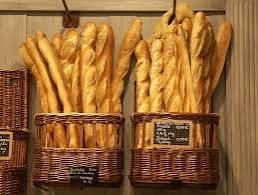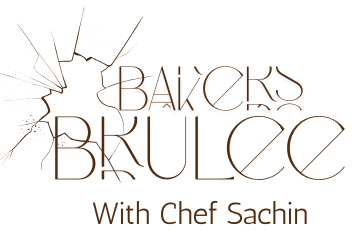The Baguette Isn't Just A Bread -
It’s A French Vibe
The Parisian Icon
Walk down any Parisian street at dawn, and you might see it. A long, golden loaf tucked under someone’s arm. The baguette isn’t just bread- it’s a French vibe. It is the aroma of history carried on the breeze, a daily ritual baked into a slender. Its name means “wand” or “baton”. It has the power to transform any meal into a moment of magic. A UNESCO-certified French icon that somehow makes you look effortlessly cool, even when it’s just breakfast or rock like a fashion accessory on your morning walk.
Born of Necessity, Forged by History
Some say the baguette was born of necessity. Napoleon’s soldiers needed bread that could fit neatly into their uniforms, long and slim, easy to carry, easy to eat. Others trace its shape to the 1920s, when French law forbade bakers from working late at night. Round loaves, slow to rise, could no longer greet morning. So the dough was stretched, and the baguette, elegant and fast-baking, was born. Some say that August Zang, the Viennese baker, lent his inspiration, bringing techniques that gave the baguette its airy crumb and delicate texture. Even through wars, rationing, and industrial shortcuts, the baguette endured, waiting patiently to reclaim its golden glory.

During World War I, the famous long baguettes weren’t very practical. Soldiers in the trenches needed bread that was easier to carry, so shorter loaves became the norm. But once the war ended and Paris came back to life, the classic baguette returned to the spotlight, bringing back its crunch and charm to city streets.
Rituals, Rules, and Parisian Pride
The French takes their bread very seriously. In 1993, France codified the truth of its bread with the Décret Pain, declaring that a real baguette can only be made with four ingredients: wheat flour, water, salt, and yeast. No preservatives, no frozen dough, no shortcuts. The bread should reflect the defining characteristics of the original baguettes. It must be kneaded, shaped, and baked where it is sold, alive and fragrant, fresh from the oven. Its form is as sacred as its ingredients: 55 to 60 cm long, 6 to 8 cm in diameter, weighing around 250 to 300 grams. It should have a crisp crust, nice brown exterior color, and a moist, cream-colored crumb with an irregular structure. A perfect imperfection that invites you to break it open and inhale the yeasty aroma of tradition. It’s best eaten within a few hours once it’s out of the oven. They usually go stale within 24 hours. In fact, Google even celebrated the 22nd Anniversary of the Décret Pain, back in 2015.
Every year Paris holds the Grand Prix de la Baguette. Bakers from all over compete for the title of the best baguette in the city. But it’s not just about bragging rights. The winner receives a prize and the honor of becoming the official supplier of baguettes to the Élysée Palace (i.e., the residence/office of the French President) for one year. Imagine baking bread for the most important person in the country. That’s something big, right?? If you want the real deal, always buy from an artisan boulangerie rather than a supermarket. In France, the baguette de tradition (regulated by law) is made with only flour, water, salt, and yeast—no additives, no shortcuts. If you see a sign saying Baguette Tradition, you’re in good hands.
The next time you pick up a baguette, use these tips to see if it lives up to French standards. Because in France, not all baguettes are created equal – and once you’ve tasted a good one, there’s no going back.

A Living Tradition
The baguette has traveled through centuries, from the marches of Napoleon’s soldiers to wartime compromises, from industrial shortcuts to small street side boulangeries where tradition reigns. Today, it is reborn, golden and crisp, simple and pure. Holding a baguette is holding history. Breaking it is tasting art. Eating it is participating in a ritual centuries in the making. In that moment, the baguette is no longer just bread – it is France itself, long, slender, and unforgettable.
